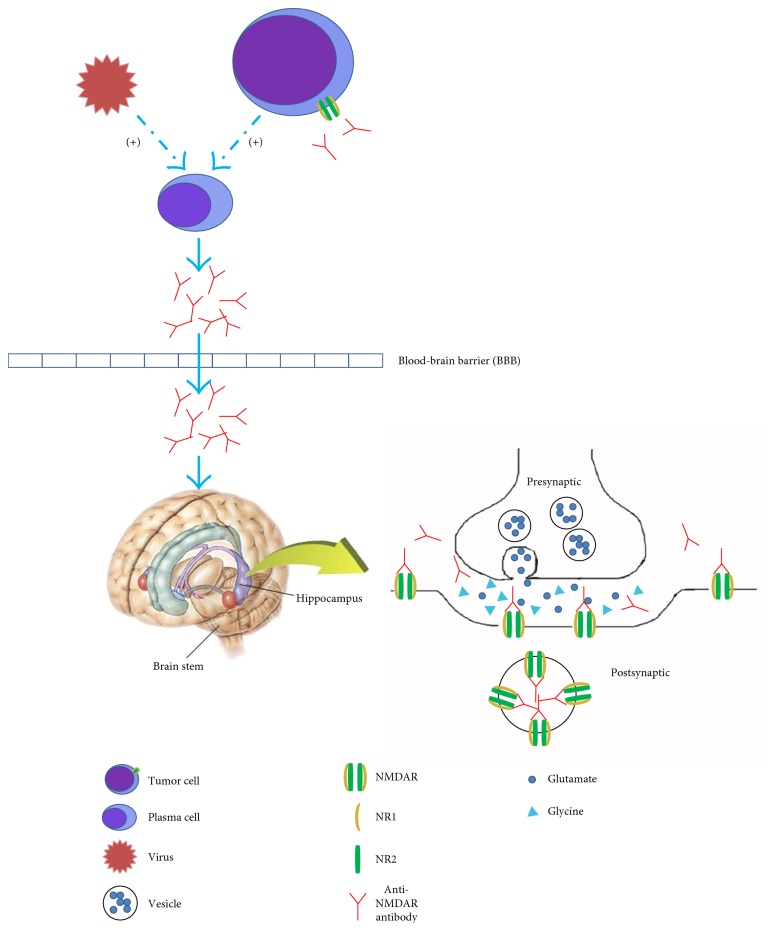Figure 1.
Possible pathogenesis of anti-NMDAR encephalitis. Anti-NMDAR antibodies synthesized by peripheral plasma cells pass through the broken blood-brain barrier (BBB). Tumors, which express NMDA receptors, as well as viral infections, may play a role in triggering the synthesis of anti-NMDAR antibodies. IL-6 and IL-17A might play an important role in the intrathecal antibody synthesis. NMDA receptors are expressed in many regions of the brain, including the hippocampus, brain stem, and neocortex. Anti-NMDAR antibodies bind selectively to synaptic and extrasynaptic NMDA receptors. The specific bind leads to crosslinking and internalization of those receptors. The number of NMDA receptors on the postsynaptic membrane decreases. The effect is titer-dependent and reversible after antibody titers decrease. Thus, anti-NMDAR antibodies lead to a specific, titer-dependent, and reversible reduction of NMDA receptors on postsynaptic dendrites which results in neuronal hypoactivity.

